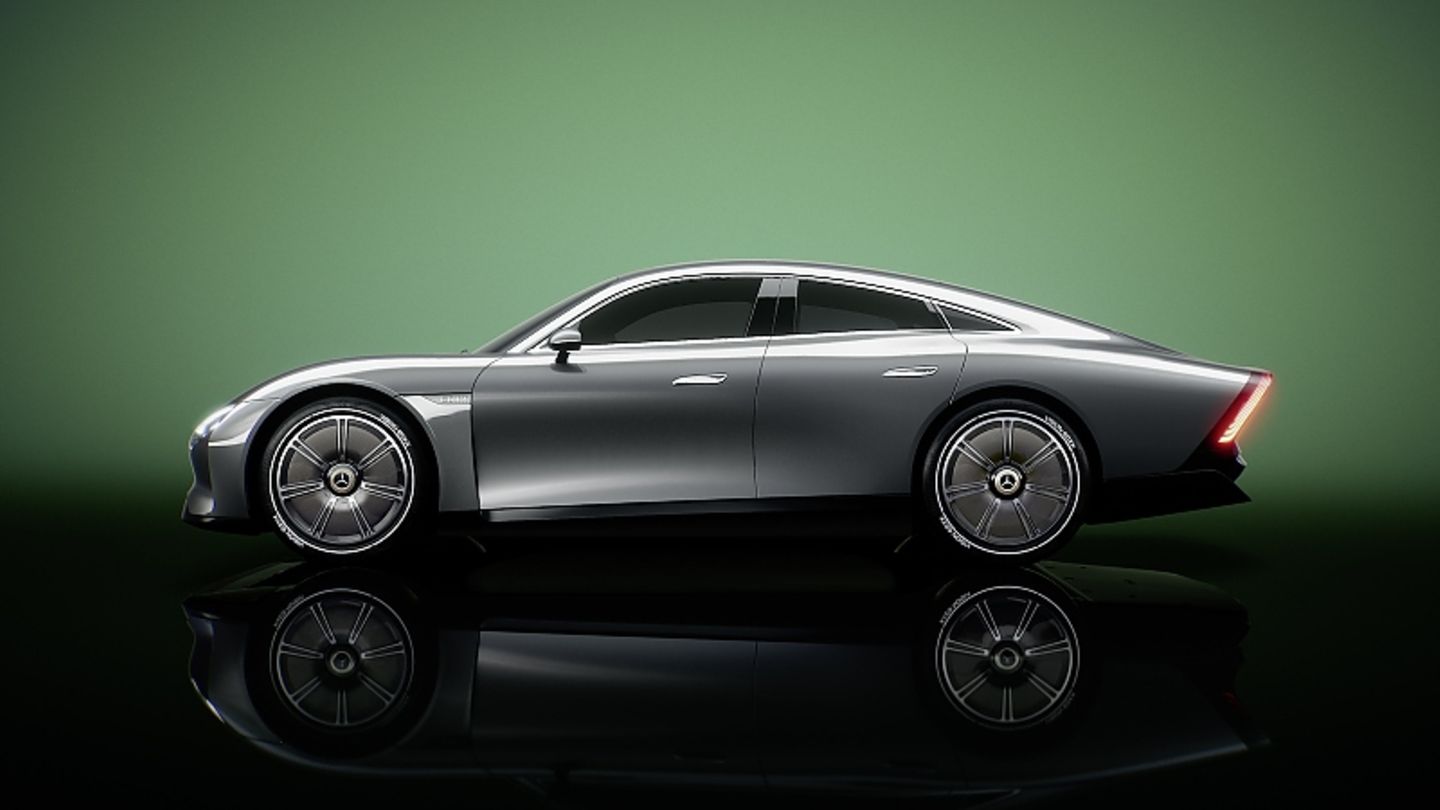With the concept study of the Vision EQXX, Mercedes shows how efficient an electric car can be in reality in the future. Even if the EQXX has no chance of being used in series production, it gives more than a glimpse of the Swabians’ upcoming compact class.
As always, it comes from the top down. After the only moderately successful one-off electric EQC, Mercedes successively presented its electric fleet. It started with the S-Class brother EQS, followed this year by the EQE and then the corresponding two SUV derivatives will follow immediately afterwards. The electric C-Class and the rustic image carrier EQG will not be long in coming either. The concept study of the Mercedes Vision EQXX shows more than ever where the journey will take the EQ family over the next few years. At its premiere in early January around the IT trade fair CES in Las Vegas, it not only shone with its strikingly streamlined design, but also with a standard consumption of less than 10 kWh per 100 kilometers. The 900 volt battery pack with around 100 kilowatt hours is only around half the size of that of the current top model, the Mercedes EQS, and is a third lighter. A guarantee for the gigantic range: a top speed reduced to 140 km/h and a drag coefficient of 0.17.
Daimler Board Member for Development Markus Schäfer: “On the Vision EQXX, the best minds from our research and development centers worked together with engineers from our Formula 1 and Formula E teams. They prove that innovations from motorsport – where the powertrains are already highly are electrified – have immediate relevance for the development of road vehicles.” What looks like an 18-month finger exercise in development and design gives, at second glance, a very concrete outlook on the new compact models from Swabia, which will be rolling out to customers in 2024/2025 – not only, but especially electrically.
“We believe that range will continue to be a major issue for customers. That’s why we will be offering our new compact class with different battery sizes,” says Daimler Board Member for Development Markus Schäfer. “With the Vision EQXX, we are showing the direction in which this is going We still see great potential in the composition of the cell chemistry in our production vehicles. But the direction is right.” This means that an electric Mercedes A-Class or a CLA with clear design borrowings for the EQXX should hardly go under 500 kilometers. In particular because the infrastructure in Europe or the USA will still have significant gaps, especially when it comes to fast charging, which is so important. The drive concept developed by the Swabians with its 150 kW / 204 hp achieves an impressive efficiency of 95 percent from the battery to the wheels. “Achieving long electric ranges sounds easy, but it is a complex technical challenge. The simplest way is to use a larger battery,” says Jörg Bartels, Head of Vehicle Integration at Mercedes, “but this leads to poorer performance due to size and weight Efficiencies. This is definitely not the wisest way, nor is it the best use of valuable resources. With the Vision EQXX project, we have found new ways to increase the range of an electric car. And we are taking efficiency to a whole new level.”
The interior of the EQXX also gives a clear view of the upcoming electric models on the small platform. There will be no multi-part large screen as is currently the case in the EQS or the EQE, nor will there be satellite displays as specified by the new Mercedes SL or the G-Class. The future also seems to belong to the Swabians with the continuous large displays that stretch from the left side of the dashboard to the right A-pillar. The displays will be touch-enabled and offer razor-sharp images in high resolution. However, not only the finger movements are used, but in particular the own language. Elements of the user interface support the interactions between driver and vehicle; among other things, through artificial intelligence that mimics the way the human brain works.
And even if the EQXX shines in the interior with its ecological materials – leather is not a thing of the past at Mercedes compared to one or the other manufacturer – on the contrary. “We want to continue to give our customers the choice of interior materials in the future,” says Markus Schäfer. “For us, however, it’s very clear: It has to be sustainable – and that along its entire chain; regardless of whether it’s a natural product, such as real leather obtained under animal welfare aspects, or biotechnologically manufactured materials of the future, like in the Vision EQXX.”
Source From: Stern
I am a 24-year-old writer and journalist who has been working in the news industry for the past two years. I write primarily about market news, so if you’re looking for insights into what’s going on in the stock market or economic indicators, you’ve come to the right place. I also dabble in writing articles on lifestyle trends and pop culture news.




